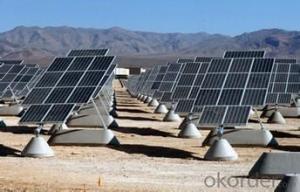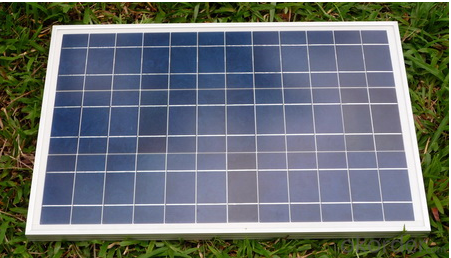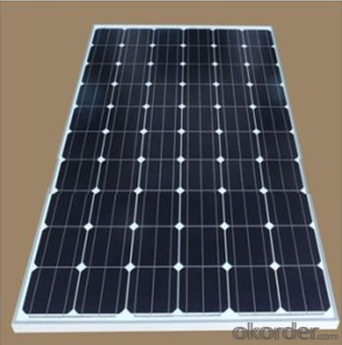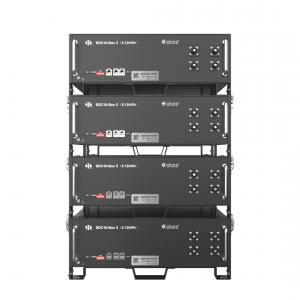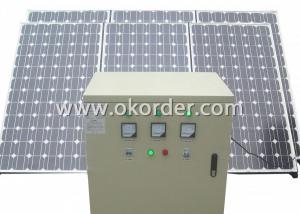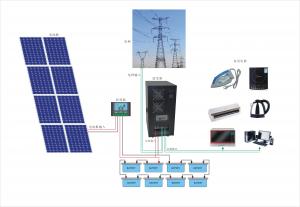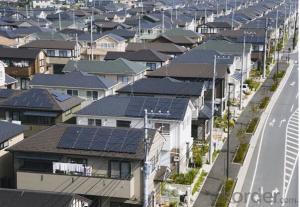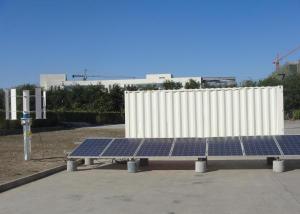Skagit Solar Energy Systems:15kw Solar Home Solution with 25 Years Quality Assurance
- Loading Port:
- Shanghai
- Payment Terms:
- TT OR LC
- Min Order Qty:
- 1 pc
- Supply Capability:
- 5000 pc/month
OKorder Service Pledge
OKorder Financial Service
You Might Also Like
Specification
15KW Solar Home Solution with 25 years Qualtiy Assurance
Production description
a solar array only encompasses the ensemble of solar panels, the visible part of the PV system, and does not include all the other hardware, often summarized as balance of system (BOS). Moreover, PV systems convert light directly into electricity and shouldn't be confused with other technologies, such as concentrated solar power or solar thermal, used for heating and cooling.
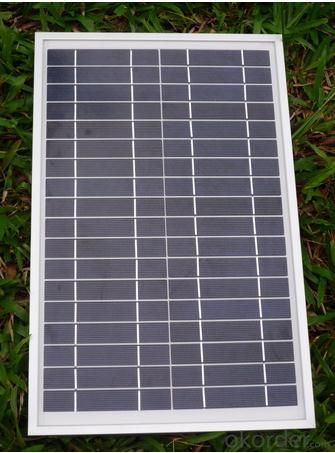
Feature
1.High conversion efficiencies resulting in superior power output performance.
2.Outstanding power output even in low light or high temperature conditions
3.Optimized design for ease of soldering and lamination
4.Long-term stability,reliability and performance
5.Low breakage rate
6.Color uniformaity
Physical characteristic
1. Rigorous quality control meets the highest international standards.
2. High-transmissivity low-iron tempered glass, strong aluminium frame.
3. Using UV-resistant silicon.
4. IS09001/14001/CE/TUV/UL
- Q: Can solar energy systems be used in areas with limited space for ground-mounted installations?
- Yes, solar energy systems can be used in areas with limited space for ground-mounted installations. In such cases, alternative options like rooftop solar panels or solar canopies can be utilized to maximize the use of available space and still harness solar energy effectively.
- Q: How do solar energy systems handle excess energy production?
- Excess energy generated by solar energy systems can be managed in several ways. One way is through net metering, which involves feeding back any surplus energy produced by the solar system into the grid. This surplus energy is then credited to the homeowner's account, causing their meter to spin backward and ultimately reducing their energy bill. Another approach to handling excess energy production is the utilization of battery storage systems. These systems enable homeowners or businesses to store any extra energy generated by their solar panels. The stored energy can then be used during periods of high energy demand or when the sun is not shining, such as the evening or cloudy days. This maximizes the efficiency and value of the solar system. Additionally, certain solar energy systems are designed to automatically shut down or reduce their output when there is an excess of energy being produced. This strategy, known as curtailment, is commonly implemented in large-scale solar farms or utility-scale installations. By decreasing the output in these situations, the surplus energy is not wasted and can be managed and distributed more effectively. In summary, solar energy systems employ various methods, including net metering, battery storage, and curtailment, to effectively handle excess energy production. These mechanisms ensure that the surplus energy is not wasted and can be efficiently utilized, showcasing solar energy as a sustainable and highly efficient power source.
- Q: Can solar energy systems be used in remote locations without access to the grid?
- Yes, solar energy systems can be used in remote locations without access to the grid. These systems, often referred to as off-grid or standalone solar systems, are designed to generate and store electricity from sunlight using solar panels and batteries. They can provide a reliable and sustainable source of power for various applications such as homes, businesses, and even entire communities, enabling them to operate independently without relying on the traditional power grid.
- Q: Can solar energy systems be used in cloudy or rainy climates?
- Yes, solar energy systems can still be used in cloudy or rainy climates. While the efficiency of solar panels may be slightly reduced, they can still generate electricity even under overcast skies. Additionally, advancements in solar technology and the use of energy storage solutions can help overcome the intermittent nature of sunlight in such climates, making solar energy a viable option for generating power regardless of the weather conditions.
- Q: Can solar energy systems be used for heating swimming pools?
- Yes, solar energy systems can be used for heating swimming pools. Solar thermal systems are specifically designed to collect and harness the sun's heat, which can then be used to warm water in swimming pools. These systems are cost-effective, environmentally friendly, and can significantly reduce energy consumption compared to traditional heating methods.
- Q: Can solar energy systems be used for powering electric bike charging stations?
- Yes, solar energy systems can be used to power electric bike charging stations. Solar panels can generate electricity from sunlight, which can then be used to charge electric bikes. This renewable and sustainable energy source is a great option for powering charging stations, reducing reliance on traditional energy sources and promoting eco-friendly transportation.
- Q: What is the impact of snow cover on the performance of solar panels?
- The impact of snow cover on the performance of solar panels can vary depending on the severity and duration of the snowfall, as well as the design and tilt angle of the panels. When solar panels are covered in snow, they are unable to generate electricity as effectively. The snow blocks the sunlight from reaching the panel's surface, reducing the amount of energy that can be converted. This can lead to a decrease in the overall power output of the solar system during the snowy period. However, it is important to note that most solar panels are designed to have a tilt angle that allows for natural snow shedding. When the panels are installed at an angle, the snow can slide off more easily, exposing the surface and allowing sunlight to once again reach the photovoltaic cells. In regions with regular snowfall, it is common for solar panel installations to have a steeper tilt angle to facilitate snow removal. Additionally, some solar panels are equipped with anti-reflective coatings or self-cleaning features that can help reduce the impact of snow cover. These coatings or features can prevent snow from sticking to the surface, allowing for faster snow removal and improved performance. It is worth mentioning that snow cover can also have a positive impact on solar panels in certain cases. A thin layer of snow can act as an insulating layer, helping to retain heat and potentially increase the efficiency of the panels. However, this effect is generally minimal and limited to specific conditions. Overall, while snow cover can temporarily reduce the performance of solar panels, the impact can be mitigated through proper installation techniques and design considerations. In areas with regular snowfall, it is important to consider the tilt angle, anti-reflective coatings, and self-cleaning features to ensure optimal performance throughout the year.
- Q: Can solar energy systems be used for emergency backup power?
- Yes, solar energy systems can be used for emergency backup power. They can be equipped with battery storage systems to store excess energy generated during the day, which can then be used during power outages or emergencies. This allows for a reliable and sustainable source of backup power, reducing reliance on traditional electricity grids.
- Q: Can solar energy systems be used in powering retirement homes or assisted living facilities?
- Retirement homes and assisted living facilities can indeed utilize solar energy systems to power their operations. These facilities face a substantial energy demand for heating, cooling, lighting, and electrical appliances. However, by installing solar panels on rooftops or suitable areas, these facilities can generate their own electricity and decrease their dependence on the grid. The implementation of solar energy systems offers significant advantages for these establishments. One notable benefit is the potential for substantial cost reduction, as solar power can offset a significant portion of their electricity bills. This aspect is especially crucial for retirement homes and assisted living facilities, which operate on limited budgets and must allocate resources efficiently. By harnessing solar power, these facilities can redirect the saved funds toward providing enhanced care and services for their residents. Moreover, solar energy systems contribute to a cleaner and more sustainable environment. Retirement homes and assisted living facilities bear a responsibility to promote their residents' well-being, and the utilization of solar power enables them to reduce their carbon footprint. This environmentally friendly approach can positively impact the health and overall quality of life for the residents. Additionally, solar energy systems serve as a reliable power source during emergencies or power outages. In areas prone to extreme weather events, where power disruptions are frequent, having a solar energy system with battery storage ensures a continuous and uninterrupted power supply to critical areas such as medical equipment, lighting, and HVAC systems. In conclusion, solar energy systems offer a feasible and advantageous solution for powering retirement homes and assisted living facilities. These systems can significantly decrease operating costs, promote sustainability, and provide a reliable power source, ultimately enhancing the quality of care and services provided to residents.
- Q: Can solar energy systems be used in areas with limited access to solar energy research facilities?
- Yes, solar energy systems can still be used in areas with limited access to solar energy research facilities. The research facilities are primarily used for studying and advancing solar energy technologies. However, the basic principles of solar energy and the design and installation of solar systems are well-established. Therefore, even without access to research facilities, solar energy systems can still be implemented effectively in areas with limited solar energy research.
Send your message to us
Skagit Solar Energy Systems:15kw Solar Home Solution with 25 Years Quality Assurance
- Loading Port:
- Shanghai
- Payment Terms:
- TT OR LC
- Min Order Qty:
- 1 pc
- Supply Capability:
- 5000 pc/month
OKorder Service Pledge
OKorder Financial Service
Similar products
Hot products
Hot Searches
Related keywords
